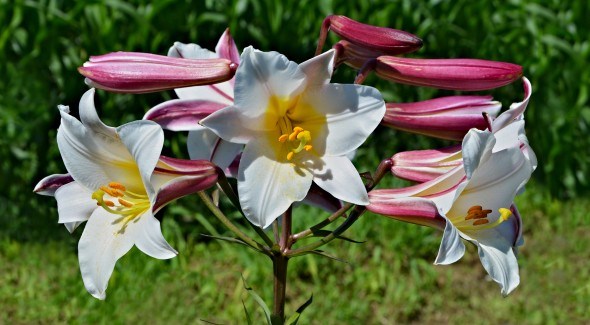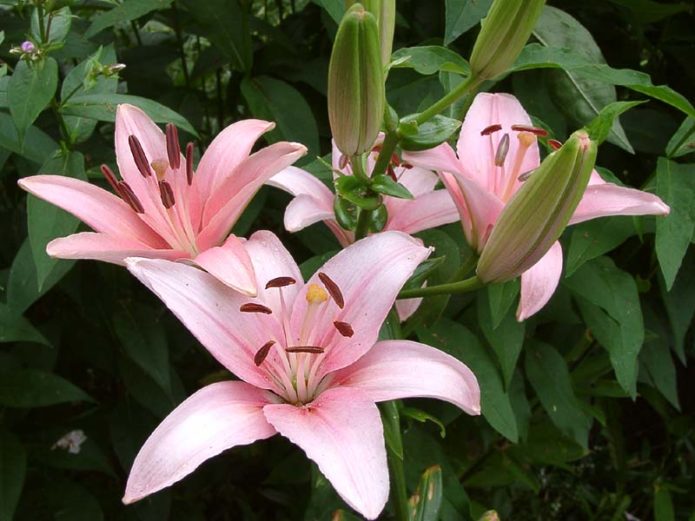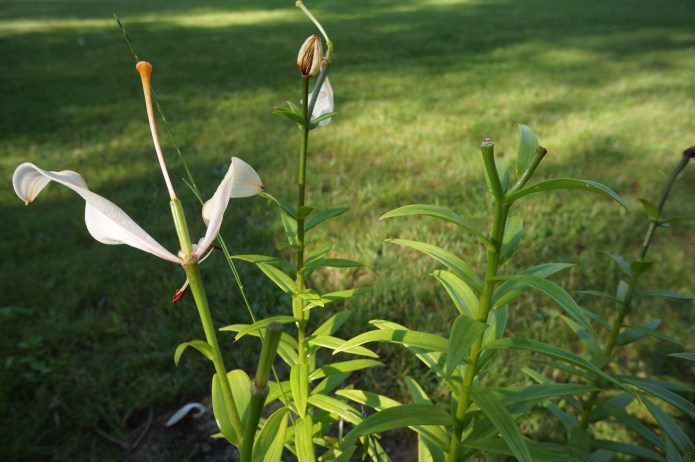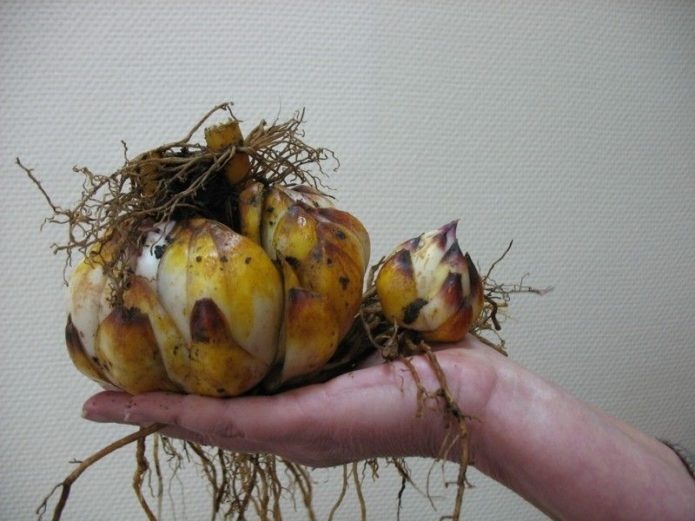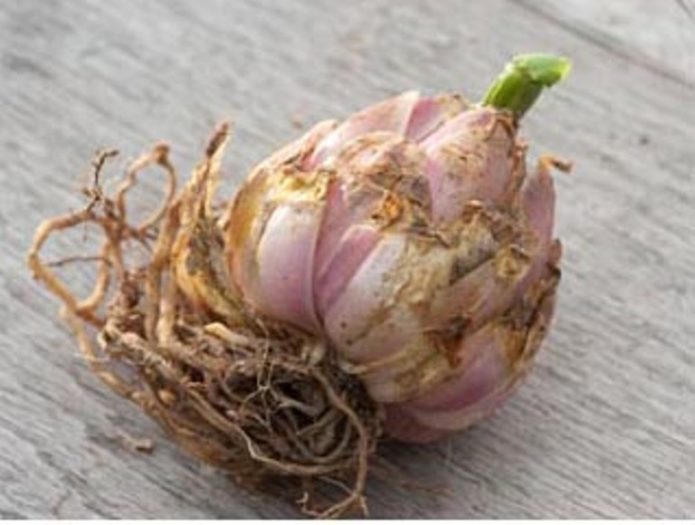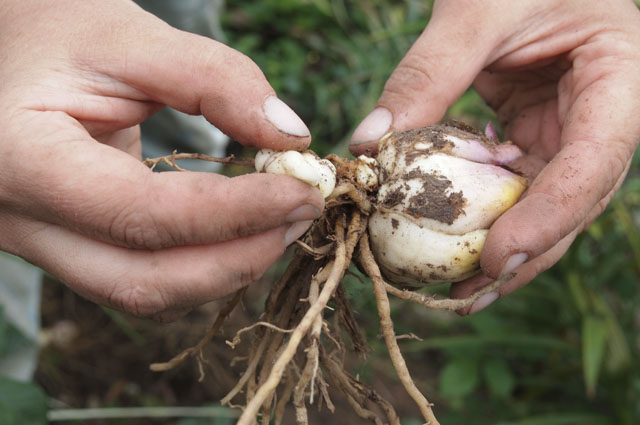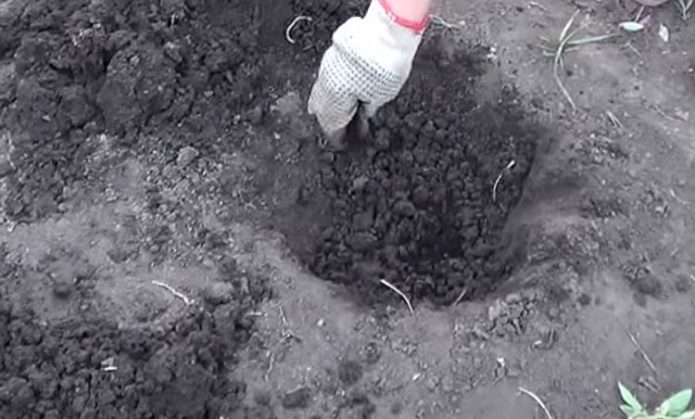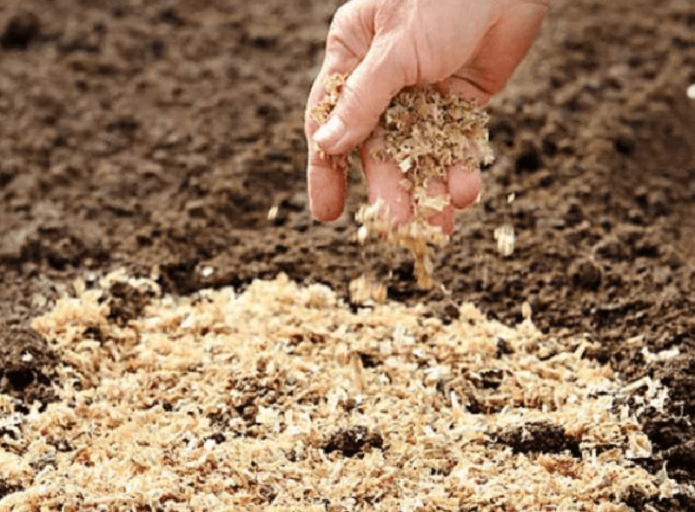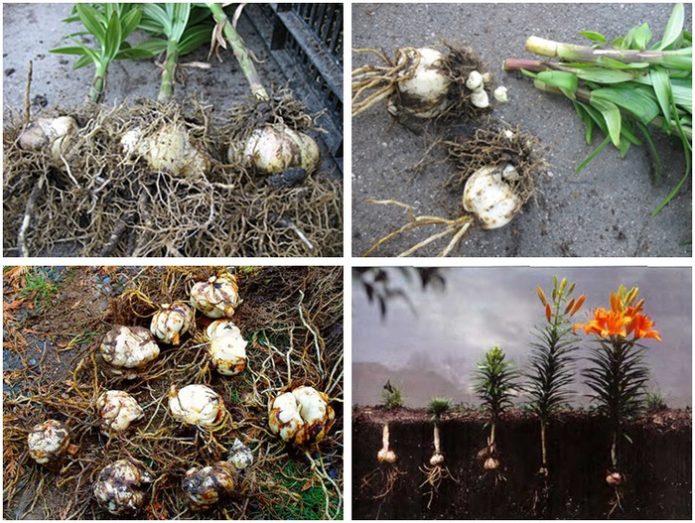Caring for plants is not easy. Especially a lot of difficulties arise when you need to take care of rather capricious flowers. Lilies are one of those. Even the usual transplantation of lilies in the fall to another place requires a serious approach. It is necessary to take into account several subtleties so that the plants begin in a new bed, bloom well and do not start to hurt. Improperly transplanted flowers may bloom too late the next year or not bloom at all. How to avoid such undesirable consequences?
Content
Why do you need a transplant and what will happen if you do not do it
The life cycle of lilies is not much different from other perennial flowers. They are ways of "sitting" in the frozen ground all winter thanks to the special shape of the roots. In lilies, these are bulbs. But after a few years, the flowers begin to bloom worse, develop more slowly. To give them a new "push", the plants must be transplanted to another place. Moreover, this should be the ground, where no other flowers grew during the year. Untouched, rested soil is exactly what perennial lilies need to renew themselves, be saturated with minerals and bloom with renewed vigor.
Interestingly, the frequency of transplanting lilies is associated with their variety:
- American hybrid lilies and martagons are able to calmly grow in one place up to 8-10 years;
- Asian and tubular varieties need to be "moved" every 2 years, and some subspecies - even every year;
- all other species, as a rule, live confidently in one place for 4–5 years.
Plants are recommended to be transplanted at least as often as indicated. However, even an annual transplant will not hurt them - it will only add hassle to the gardener. If you neglect this simple activity, then the result will be slow development, reluctant flowering (or its complete absence) and susceptibility to disease. It is known that lilies get sick in a new place 3-4 times less often than in a place where they have been growing for several years in a row.
It is also convenient to propagate flowers during transplantation. Instances grown from bulbs bloom the next spring or summer, a maximum of a year later. If you sow seeds, the plants will bloom only after 5-6 years.
When to replant lilies: fall or spring
Everyone who has lilies on their farm wondered when to transplant? Everywhere and everywhere it is recommended to do it either in spring or autumn. It is logical that these are the two most favorable pores. In summer, lilies bloom, and they should not be touched, and in winter, the soil freezes over, and any gardening work becomes impossible. But what should you choose - spring or autumn? We share the observations of experienced florists.
The following factors speak in favor of the autumn transplant:
- after the flowering period, the bulbs accumulate "energy", which allows them to take on well in a new place;
- in autumn it is more convenient to propagate them, because over the summer, young ones appear near the old bulbs;
- it's trite easier - the bulb can be dug up and transplanted right away, and not kept in the house all winter.
But there are situations when transplanting lilies in spring is the only option:
- if cold comes early;
- if the lilies of late varieties bloom all autumn (from flowering to transplanting, about 2 months should pass, and in the case of late varieties, winter will already come, and it will be too late to transplant);
- if the winters are very cold and the bulbs still have to be dug up.
So, the choice of time for transplanting lilies is influenced by the plant variety and the temperature conditions in the region. But novice growers are advised to choose autumn, because at this time the transplant is much easier.
In what time frame to dig

You need to have time to transplant lilies 2 months after flowering, but before the onset of cold weather
There are two main factors in determining when to transplant plants. The first is the flowering period. From the moment it ended, it should be 1.5-2 months before the transplant... Less as well as more is undesirable. If it is too late to dig up the bulbs, they will not have time to prepare for winter. And next year they will almost certainly not produce flowers.
The second factor is temperature conditions. Lilies are able to overwinter normally in the ground, but only if they were transplanted before the onset of cold weather. The optimal daytime temperature during transplantation is about 12 degrees. Planting a bulb in cold ground does not bode well. Therefore, the timing for this procedure must be selected depending on the region of Russia:
- in Moscow and nearby regions, as well as in the Leningrad region, you can transplant in August and September;
- in the Urals - from early September to early October;
- in Siberia - in September, if it is not cold yet (otherwise in August);
- in central Russia - from mid-September to mid-October (but you need to follow the forecasts - will the autumn be warm, because the weather in the middle lane is very unstable);
- in the polar and polar zones, it is recommended to dig up the bulbs for the winter, and if transplanted, then no later than the end of August.
If the winters in the area are cold (frosts are about minus 20 degrees and below), then it is advisable to wrap the bulbs buried in the soil. For this, peat or sawdust is often used, and on top they are covered with a strong film.
Transplanting lilies in the fall to another place: step by step instructions
Be careful and attentive during the transplant. If you make a mistake somewhere, then the plant is likely to survive it. But it will not bloom next year. To correctly transplant and count on flowers as early as next year, it is necessary to act according to a special algorithm.
- Let the lilies bloom. After flowering, wait 1.5-2 months. You should not rush to this.
- Dig up the bulb as carefully as possible to avoid damaging the plant's rhizome. The roots must remain on the bulb, at least the bulk. Look for small young bulbs, if any. With their help, flowers can be propagated.
- Remove any dried or dead husk from the dug out onion. As a rule, this is only the top layer.
- If you plan to propagate a lily, but there are no small bulbs, divide the large onion. It consists of several parts, like a head of garlic. If you don't want to propagate the plant, then skip this step.
- Make a weak solution of karbofos. The water should be at room temperature. If there is no karbofos, ordinary potassium permanganate will do. Soak the onions in the solution for about 30 minutes.
- Dig holes that are sized for the bulbs. It is necessary to make sure that the ground covers the lily by 4-5 cm.If the bulb has large roots, then deepen the hole so that the rhizome fits freely inside.
- Pour sand into the hole. Not much is needed - enough to completely cover the bottom of the recess with sand. Place the onion inside. Sprinkle sand over the roots. You do not need to sprinkle the onion itself, only the rhizome.
- Cover the hole with earth to create a flat surface. Apply a layer of peat or sawdust to protect the lily from the frost to come. When spring comes, this layer will also serve as a fertilizer.
If a cold winter is expected, and it makes sense to cover the planting site with a film, you do not need to do this right away. Wait until the temperature drops to 0–4 degrees and only then cover.
Video on how you can transplant flowers
It is quite easy to care for lilies, these plants are very unpretentious and tenacious. But the same cannot be said for their colors. The lily will calmly endure difficult weather conditions, will grow green leaves in spring and will feel great, with one exception - it may not bloom. In the wild, lilies, which no one cares for, bloom only in the third year after sowing, or even later. To achieve regular flowering, the gardener needs to transplant lily bulbs on time and observe all the subtleties of this process.
